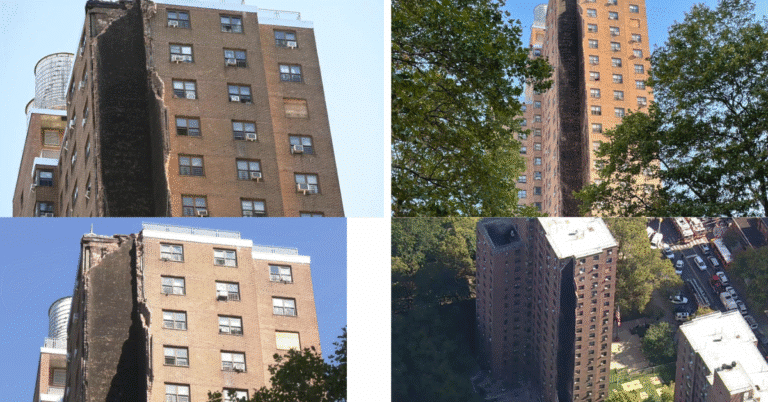New Superhouse show captures the rebellious spirit of Dan Friedman’s Manhattan apartment
New York gallery Superhouse opens ‘Why Shouldn’t I Have Fun All Day?’ today (6 February 2025), a solo exhibition marking 30 years since the passing of pioneering graphic designer and artist Dan Friedman. Staged in collaboration with the artist’s estate, the show offers an intimate look at his artistic and domestic world, recreating the vivid, experimental environment of his apartment – an ever-evolving work of art in itself.
In the gallery space, works are set against Day-Glo-painted walls, the same colours Friedman used, interspersed with his personal effects. The exhibition brings together pieces from his own collection as well as those of close friends and family, capturing the spirit of a designer who rejected convention in favour of play, provocation, and a radical rethinking of modernism.
The show recreates the vivid, experimental environment of Friedman’s Greenwich Village apartment, shown here, where he lived from the late 1970s until his death in 1995
(Image credit: Photography by Tim Street-Porter)
In the late 1970s, Friedman was a corporate design executive and Yale professor living in a one-bedroom high-rise apartment overlooking Washington Square Park. By day, he worked at the design consultancy Pentagram, producing precise but often humourless posters, letterheads, and logos for corporate clients such as Citibank and Williwear. But he was growing restless. ‘I began to live a double life – out at night, meeting non-designers, artists,’ he later recalled. ‘I realised I was having more fun working at night in this other world, this other side of New York City. I thought, “Why shouldn’t I have fun all day?”‘
‘I created an extreme caricature of the beautiful modern American home to bring into question our notion of what is a beautiful modern American home’
Dan Friedman
At home, his apartment became an outlet for his pent-up creativity – a kind of three-dimensional sketchbook where he experimented with shape, volume, and colour. Every surface – walls, ceilings, even appliances – became a canvas for his work. Found objects were transformed into extravagant Day-Glo furniture and lighting, painted in fluorescent hues, as he challenged conventional notions of good design. ‘I created an extreme caricature of the beautiful modern American home to bring into question our notion of what is a beautiful modern American home,’ he explained.

Staged in collaboration with the artist’s estate, the exhibition brings together pieces from his own collection as well as those of close friends and family
(Image credit: Photography by Matthew Gordon)
Disillusioned with corporate design, he left to devote himself fully to making three-dimensional objects – works rich in complexity and symbolism, shaped by the chaotic, media-saturated, and culturally diverse world of lower Manhattan. During this highly productive period, which lasted until his death in 1995, Friedman became a central figure in the Lower East Side art scene. He formed close friendships and creative exchanges with contemporaries such as Keith Haring, Kenny Scharf, and Willi Smith. As the pioneer of American Radical Modernism, his New Wave typography – an energetic, experimental style – drew from punk and postmodern language theory.

Works are set against Day-Glo painted walls, the same colours Friedman used, interspersed with his personal effects
(Image credit: Photography by Matthew Gordon)
‘Why Shouldn’t I Have Fun All Day?’ brings this radical spirit into focus and shows how his approach is still relevant today, perhaps more than ever. Displayed works include ‘Basic Screen’ (1981), Friedman’s first folding screen and an early reflection of his embrace of the graffiti-covered urban landscape. (He would go on to create numerous screens on casters – his ‘movable walls’ – to reflect shifting moods, objects, and seasons.) Also featured is ‘Wicky Wacky Table‘ (1981), a dining table with a grass skirt and a classical dentil cornice, a playful nod to Friedman’s love of kitsch and pastiche. Another highlight is ‘A Fallen Sky in a ‘Regal Landscape’ (1985), a neon-coloured assemblage of city detritus that once held pride of place in his home. It stands as a critique of American consumerism’s wastefulness.

Friedman believed designers and artists should work with passion and responsibility, using culture, diversity and fantasy to try and shape a better society
(Image credit: Photography by Matthew Gordon)
‘I have used my home to push modernist principles of structure and coherency to their wildest extreme,’ Friedman wrote the year before his death in Radical Modernism (Yale University Press), his 12–point treatise for life and work – essential reading for all creatives. ‘I create elegant mutations, radiating with intense colour and complexity, in a world that has deconstructed into a goofy ritualistic playground for daily life.’
‘Why Shouldn’t I Have Fun All Day?’ runs from 6 February to 22 March 2025, at Superhouse, 120 Walker Street, 6R, New York, NY 10013
📅 Published on: 2025-02-06 07:31:00
🖋️ Author: – An expert in architectural innovation and design trends.
For more inspiring articles and insights, explore our Article Archive.
Note: This article was reviewed and edited by the ArchUp editorial team to ensure accuracy and quality.






